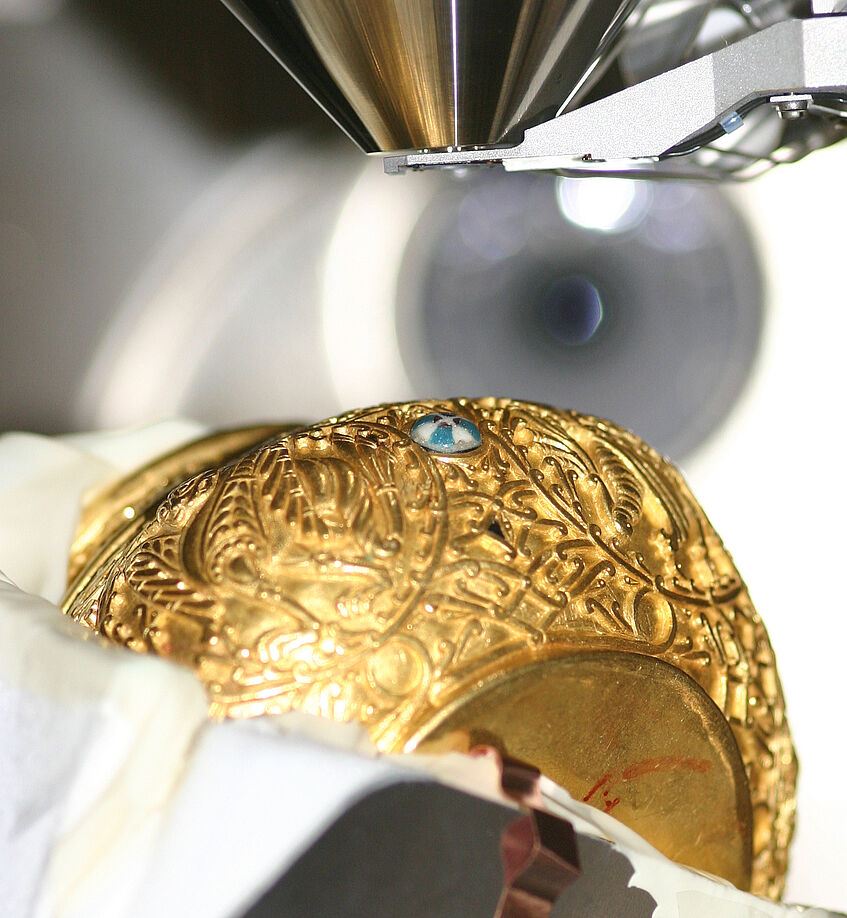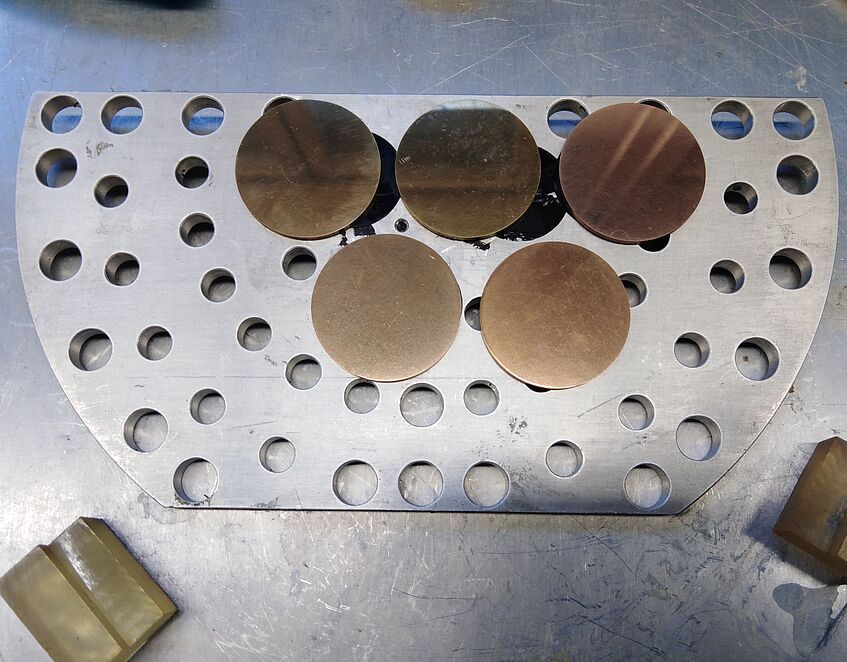Scanning Electron Microscopy

View into the sample chamber of the Scanning Electron Microscope.
The surface of the gold cup is analyzed and forging details documented. Bellied cup Inv. No. VIIb 14, Gold Treasure of Nagyszentmiklós, Kunsthistorisches Museum Wien, Photo: M. Mehofer
Scanning Electron Microscopy
Dr. des. Ing. Mathias Mehofer
Archeological research as a humanities discipline deals with the material legacy of past societies. Her work focuses mainly, but not exclusively, on the research, processing and description of these material remnants. However, the focus is always on people and their abilities, their problems and their solutions in the course of interacting with their environment.
The application of scientific investigation methods for archaeological questions can already look back on a long research tradition. Especially in the last 25 years the use of archaeometallurgical analysis methods experienced a real boom. While the determination of the main elements and secondary elements contained in metals was initially of interest, the exact documentation of production techniques with the help of the evaluation of microstructures as well as recognisable traces of usage and processing on the surface gradually also became the focus of research.
The exact mapping and measurement of surface structures, such as those caused by traces of tools, combined with the results of metallographic and analytical investigations, form a meaningful combination of methods that makes it possible to comprehensively describe the manufacturing and usage history of a found object. Over the last few years, Scanning Electron Microscopes have been increasingly used for this task as they represent an optimal combination of chemical composition analyser (EDX, WDX) and magnification techniques with high depth of focus and accuracy. The device used at the VIAS (Zeiss EVO 60 XVP) was part of a FWF-funded project led by Gen.Dir. Dr. Falko Daim (title: "Goldschatz von Nagyszentmiklos"). This treasure trove is kept in the Collection of Roman and Greek antiquities of the Kunsthistorisches Museum Wien. In addition to its regular operation in high vacuum mode, this device can also be operated in so-called low-voltage mode. This allows the direct and gentle examination of non-conductive material.

Die laboreigenen Standards (Gruppe A: Kupferlegierungen: BCR-691) werden zur Kalibierung und Überprüfung der Analyseeinrichtung eingesetzt.
To the Collection of Roman and Greek antiquities at the Kunsthistorisches Museum Wien:
http://www.khm.at/en/visit/collections/collection-of-greek-and-roman-antiquities/
